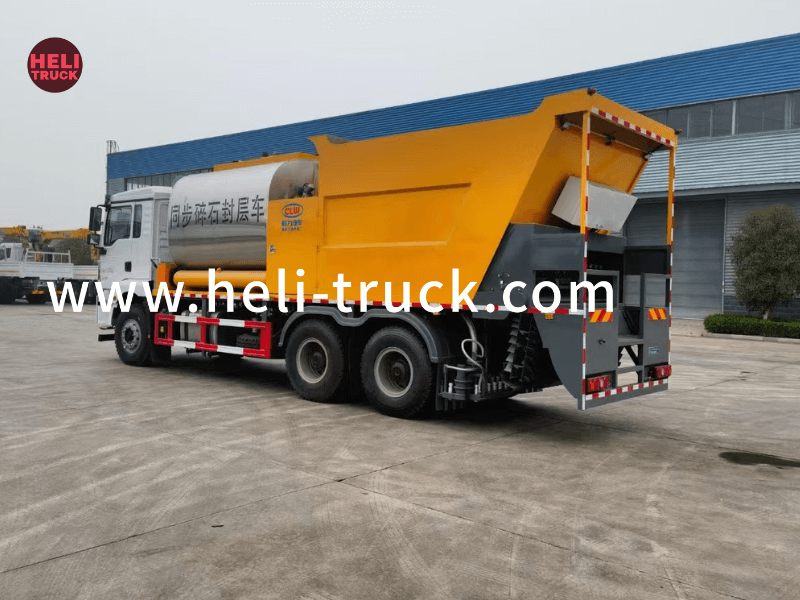Advancements in Safety Features of Garbage Compactor Trucks Ensuring a Cleaner and Safer Environment

Introduction:
Garbage compactor trucks play a crucial role in waste management systems, efficiently collecting and compacting trash to be transported to disposal sites. Over the years, advancements in technology have led to the development of garbage compactor trucks with advanced safety features. These features not only enhance the operational efficiency of the trucks but also prioritize the safety of the workers, pedestrians, and other road users. In this article, we will explore the various safety features incorporated in modern garbage compactor trucks and their impact on the waste management industry.
Chapter 1: Evolution of Garbage Compactor Trucks
The history of garbage compactor trucks dates back to the early 20th century when the need for efficient waste collection and disposal became apparent in urban areas. Initially, these trucks were simple in design and lacked the sophisticated features seen in modern-day compactor trucks. As technology advanced, so did the capabilities of garbage compactor trucks, leading to the integration of safety features aimed at improving the overall performance and safety of these vehicles.
Chapter 2: Basic Safety Features of Garbage Compactor Trucks
Before delving into the advanced safety features of garbage compactor trucks, it is essential to understand the basic safety features that are standard in most models. These features include rear-view cameras, backup alarms, and reflective markings to enhance visibility. Additionally, emergency stop buttons and warning lights are installed to alert operators of potential hazards during operation. While these basic safety features have been instrumental in minimizing accidents and injuries, the demand for more advanced safety technologies has driven manufacturers to innovate further.
Chapter 3: Advanced Safety Features in Modern Garbage Compactor Trucks
1. Collision Avoidance Systems: One of the most significant advancements in garbage compactor trucks is the integration of collision avoidance systems. These systems utilize sensors and cameras to detect obstacles in the truck's path and alert the operator through visual and auditory warnings. Some advanced systems even have automatic braking capabilities to prevent collisions, reducing the risk of accidents on the road.
2. Lane Departure Warning Systems: Garbage compactor trucks are often required to navigate narrow streets and tight corners, increasing the likelihood of lane departure accidents. To address this issue, some modern trucks are equipped with lane departure warning systems that alert the driver when the vehicle deviates from its lane without signaling. This feature helps prevent accidents and promotes safer driving practices among operators.
3. Blind Spot Detection: Blind spots are a common safety concern in large vehicles like garbage compactor trucks, making it challenging for operators to see pedestrians and cyclists around the vehicle. To mitigate this risk, some trucks are equipped with blind spot detection systems that use sensors to monitor the vehicle's surroundings. When a pedestrian or cyclist enters the blind spot, the system alerts the driver, reducing the likelihood of accidents during maneuvers.
4. Automatic Braking Systems: Automatic braking systems are another key safety feature found in modern garbage compactor trucks. These systems use sensors to detect potential collisions and automatically apply the brakes to prevent accidents. By providing an additional layer of protection, automatic braking systems help reduce the impact of human error and improve overall safety on the road.
5. Garbage truck loading process and GPS Tracking: Telematics systems have revolutionized the way garbage compactor trucks are monitored and managed. These systems gather real-time data on the vehicle's performance, including speed, location, and fuel consumption, providing fleet managers with valuable insights into their operations. GPS tracking enables managers to track the whereabouts of each truck, optimize routes, and respond promptly to emergencies, improving efficiency and safety in waste collection.
Chapter 4: Impact of Advanced Safety Features on the Waste Management Industry
The integration of advanced safety features in garbage compactor trucks has had a profound impact on the waste management industry. By prioritizing the safety of workers and the public, these features have reduced the number of accidents and injuries associated with waste collection operations. Moreover, the enhanced efficiency and performance of modern trucks have led to cost savings for waste management companies, ultimately improving their bottom line.
Chapter 5: Future Trends in Garbage Compactor Truck Safety
As technology continues to evolve, the future of garbage compactor truck safety looks promising. Manufacturers are exploring new innovations, such as autonomous driving capabilities and remote monitoring systems, to further enhance the safety and efficiency of these vehicles. Additionally, advancements in artificial intelligence and predictive analytics are expected to revolutionize how garbage compactor trucks are operated and maintained, ushering in a new era of smart waste management solutions.

Conclusion:
Garbage compactor trucks with advanced safety features represent a significant step forward in ensuring a cleaner and safer environment for all. By incorporating collision avoidance systems, lane departure warnings, blind spot detection, automatic braking, and telematics technologies, these trucks are equipped to handle the challenges of modern waste management operations. As the industry continues to embrace innovation, we can expect further advancements that will redefine the standards of safety and efficiency in waste collection and disposal.
